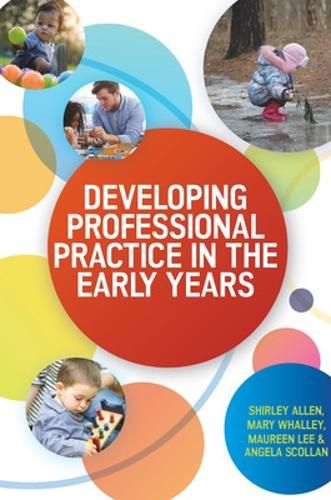Readings Newsletter
Become a Readings Member to make your shopping experience even easier.
Sign in or sign up for free!
You’re not far away from qualifying for FREE standard shipping within Australia
You’ve qualified for FREE standard shipping within Australia
The cart is loading…






This book supports the reader to understand and implement the complex aspects of the professional role of the Early Years Educator (EYE) who works, or aspires to work, with children 0-5 years. A new book that supports the EYE’s professional development is particularly appropriate at a time of shifting policy concerning the EY professional role, following the publication of the Nutbrown Review (2012). The government’s response to the review’s recommendation for an EY specialist route to QTS means that this text will be well positioned to incorporate these policy changes.
The book is concerned with different aspects and complexities of the professional role of EYEs. It adopts a ‘hands-on’ approach but also has theoretical rigour that supports the reader’s knowledge and understanding of EY practice, as well as encouraging them to take a reflective and critical stance towards their professional role.
The book’s two-part structure supports the reader’s knowledge and understanding with pedagogical approaches to EY practice in part 1 and related aspects of EY professionalism in part 2.
$9.00 standard shipping within Australia
FREE standard shipping within Australia for orders over $100.00
Express & International shipping calculated at checkout
This book supports the reader to understand and implement the complex aspects of the professional role of the Early Years Educator (EYE) who works, or aspires to work, with children 0-5 years. A new book that supports the EYE’s professional development is particularly appropriate at a time of shifting policy concerning the EY professional role, following the publication of the Nutbrown Review (2012). The government’s response to the review’s recommendation for an EY specialist route to QTS means that this text will be well positioned to incorporate these policy changes.
The book is concerned with different aspects and complexities of the professional role of EYEs. It adopts a ‘hands-on’ approach but also has theoretical rigour that supports the reader’s knowledge and understanding of EY practice, as well as encouraging them to take a reflective and critical stance towards their professional role.
The book’s two-part structure supports the reader’s knowledge and understanding with pedagogical approaches to EY practice in part 1 and related aspects of EY professionalism in part 2.